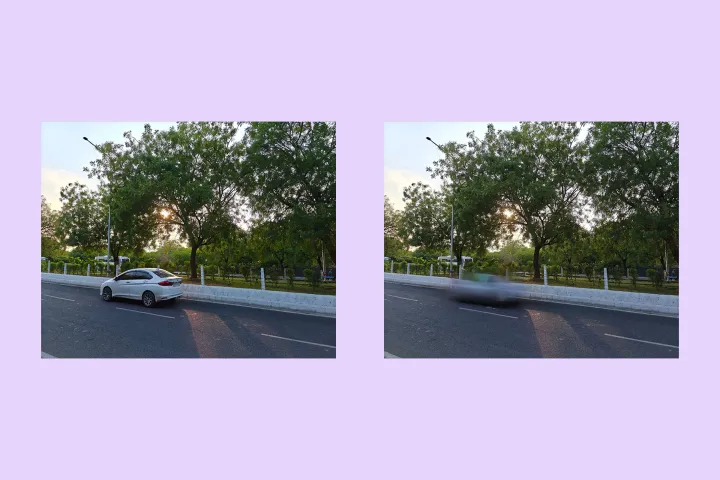
Realme has always offered value smartphones. As another brand to spin off from Oppo, it shares the same bloodline as OnePlus but mostly operates in lower segments, offering similar features at a lower price. After a slight shift in identity, Realme is back to making incredible flagship killers — a category that OnePlus birthed and dominated for a long time. Its latest phone, the Realme GT 6, has a lavish set of features that enable it to compete head-on with flagships.
Besides a rich assembly of hardware features, this roughly $650 phone bundles AI features that help it nudge its way into the flagship segment. These AI features are integrated along with core Android features to improve your experience without coloring it with gimmicks.
AI is admittedly an overused term in marketing. So, making it actually useful is a fundamental challenge that Realme takes on. Instead of adding a whole new set of features — AI chatbots, image generators, et al. — the brand is adding it to preexisting and established Android features with a straightforward objective — making AI useful and not just another addition to the features list.
AI to interpret your screen

Realme’s headliner in its ensemble of AI features is Screen Recognition. Unlike the bland name, which probably gives away its abilities, the feature is convincingly more powerful. It is designed to scan the contents of any screen across a wide range of apps for all media and text.
Realme assigns a simple and satisfying gesture to invoke Screen Recognition, where you tap and hold the screen with two fingers. When it is triggered, the contents on the screen freeze, and a scanning animation appears on top.

That’s obviously not the smart part. The AI bits come to life when you select images (or stills from a video) or text from the screen and drag them to the edge of the display. This activates what Realme calls the AI Smart Loop. While all the insistent AI connotations can sound a bit pesky, the Smart Loop functionality really helps the intelligent features stand out.
The Smart Loop intelligently determines the form of information that is being dragged and automatically suggests the most relevant apps. When you find an interesting image on the web and scan it with the Screen Recognition feature, Smart Loop will recommend social media or chat apps for you to share it. Not just that, you can drag the image over the icon of an app (say, Instagram), and Smart Loop will update to extend features like sharing it to a Story, your feed, or as a post.

The same thing happens when you drag it over to another app such as Facebook or X (formerly Twitter) or a chat app such as WhatsApp or Telegram. No more going through multiple steps to reply to a tweet/post with a relevant classic meme!
Similarly, when Screen Recognition detects an email address or phone number, it suggests related apps. Likewise, it recommends Google Maps when it finds a physical address, which is extremely useful if you spot a business on a social media app such as Facebook or Instagram. One of the power moves is to drag any image over to Google Lens and let it do the rest of the magic.

In addition to these apps, Smart Loop also lets you add media and text to what it calls a File Dock. This is like a persistent clipboard, accessible from the side of the screen, that doesn’t erase any saved information automatically until you manually do it. The feature can be extremely useful when you have to copy a bazillion things from one page in a random order.
Suggestions from Smart Loop are usually helpful, but they’re not always accurate. To bypass that, you can drag the image over to the arrows, and the loop rotates to accommodate more apps in a fashion satisfyingly similar to a dial phone. It cycles through the rest of the apps, allowing you to drop the media wherever you want.

These are options from Android to access app shortcuts by long-pressing an app’s icon — a core part of Android for over half a decade. What makes Realme’s implementation more appealing is that it reduces the steps involved in saving media, copying text, or even scanning useful information. Instead of multiple taps on the screen, you can tap just once, followed by a few drags of your thumb across the phone’s screen to save or access a whole bunch of things.
What’s even more exciting is that the gestures are intuitive and do not require extensive practice to get used to. You can see AI Screen Recognition in action above.
I find these features to be much easier to use compared to the existing Screen Context on Google Assistant or Circle to Search on Samsung and Google’s top-end phones.
Distraction-less images

Removing unwanted objects from images is something we’ve seen on many phones already, and Realme is trying to perfect it. On the GT 6, Realme offers an AI Smart Removal feature that cleverly eliminates distracting items from your pictures.
But with a feature already offered by nearly every Android phone maker and served by even Google as part of Google Photos, what can Realme really achieve? It claims to do better than existing options on mobile, and it really does.
The punchy colors in the image convey the story of a jubilant evening when the sun emerges out of clouds after several hours of rain. But the fast-moving Honda appears jarring in the otherwise serene ambiance. I tasked Google’s Magic Editor to remove the sedan, which resulted in the image on the right.

Now, when Realme’s own AI eraser is used, the results are far more natural and convincing, as you can see below. The tool leaves no trace of the car in the image on the right, seamlessly imaging the median and the trees in the background.

Now, once is a chance, so I confirmed this with another image. When removed from the background using Google’s Magic Editor, the patch of grass and remnants of the car leave an abstract mosaic of unrecognizable surfaces.

Establishing a pattern and reducing the probability of just being a coincidence, the image modified with Realme’s object eraser, as seen on the right below, extends the canvas more naturally. It can even recreate leaves fallen on the asphalt, giving it a more believable appearance.

While I am unsure what makes Realme’s implementation more effective than Google’s, I will surely lean toward using the former. Besides Realme, I have only seen a similar level of finesse in the AI regeneration features on the recent desktop versions of Adobe Photoshop. The fact that Realme produces results similar to a desktop app is nothing short of commendable.
Videos that see beyond the naked eye

The Camera was one of the earliest features on Android phones to be slapped with an AI label. For almost a decade now, brands have been babbling about AI in photography and videography, when in reality, the applications have been limited to adding color filters and applying blanket settings to make photos and videos more visually appealing. Of course, Google, with its prowess in computationally enhancing the camera’s output, remains to be an exception.
While slowly more brands are creeping up on Google with special partnerships with camera brands and dedicated processors on phones for better images, Realme claims to use AI to improve the camera’s performance instead. One feature that stands out is its AI-enhanced video mode.
Under extreme low-light conditions, the Realme GT 6 makes some astonishing improvements to the quality of the videos in broadly two ways. First, the so-called AI Night Vision feature increases the amount of light the camera captures. Second, the recorded videos appear much sharper and more detailed with it.

Improving videos is significantly more difficult than producing the same effects in photos. It requires the phone to process dozens of frames every second, which, in turn, relies on the hardware. It is commendable that the Realme GT 6 improves the visibility in videos by a respectable margin, even without the more powerful hardware or a dedicated co-processor.
You can see the refinements for yourself in this comparison above.
Protection for your eyes

I spend almost every waking hour staring at screens. Given the amount of hate that blue light earns in modern society, I feel confident the pattern is endemic. So, when a manufacturer walks the extra mile and thinks about ocular health, I’m stoked.
Modern-day devices come with blue light filters, brightness limiters, and other mechanisms that mitigate screens’ effects that you can’t instantly detect but only perceive through terrible feelings like nausea. Flagship devices auto-adjust the colors based on your surroundings and the time of day. So, what can phone companies do beyond these existing measures to ensure your eyes are as safe as can be?
Realme has an answer, and the eye protection feature has some AI baked into it, too. In addition to the standard mechanisms to cut out blue glare and automatically adjust the colors on the screen, Realme uses the front camera for signs of fatigue. When it catches you yawning or blinking your eyes less than normal, it treats them as signs of exhaustion and changes the colors of the screen to suit your eyes.

The feature works with or without the existing bedtime mode (which intensifies the yellow on the screen), specifically when you are reading something, watching a video, or using social media. It also accounts for ambient light and convincing signs of weariness. The extent of blue light filtering is much more subtle here and increases very gradually compared to the standard bedtime mode, gently easing your eyes into a more relaxing state.
I still wish Realme also added features to fade colors to help you detach from the phone fully at night instead of making it difficult to separate. However, the current implementation is one step in the right direction.
A major step with a lesson to remember

In the past few months, we have witnessed an upsurge in the applications of AI on phones. Despite the entire industry echoing the need to make our phones capable of thinking, these features have largely been limited to flagship devices with ample processing power.
Realme, on the other hand, is making a decent effort to make it suitable for utilization for a broader audience. Understandably, the features are limited at this stage, but the efforts stray clear of any gimmicks and instead focus on things you might actually end up using. Realme shares resources with Oppo and OnePlus, which can mean these may be available in the U.S. through upcoming OnePlus phones and not necessarily be limited to flagships.
There is, however, one caveat too big to be ignored. Realme relies on Oppo’s self-trained large language model, AndresGPT, which is far more capable in Chinese than in English. However, the aspect that cannot be dismissed is that most of the data processing happens on the cloud — at least for non-flagships like the Realme GT 6. As the AI race gets more competitive, the privacy of data is something brands will have to address. Until then, you might want to avoid scanning your personal data or media with these AI-laden features.
But your private media and text aside, Realme AI features appear promising and can brilliantly enhance how we use our phones — while reducing the number of steps to get anything done. That’s how Realme wins at the smartphone AI game.
Lastly, buying this phone will be tougher than you thought, as Realme does not officially sell it in the U.S. In Europe, the Realme GT 6 can be bought for a starting price of 600 euros (~$645), with the highest end touching 800 euros.



